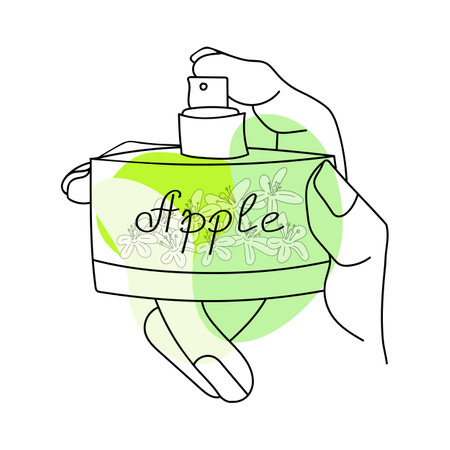Understanding British Skin Types and Tones
When considering chemical peels, it is essential to understand the diverse skin types and tones found across the UK. The British population features a broad spectrum of complexions, from fair and porcelain-like skin common among those with Northern European heritage, to medium and olive undertones more prevalent in individuals with Mediterranean or Eastern European backgrounds. Additionally, Britain’s multicultural society means that many people have richer melanin levels, including South Asian, Black Caribbean, African, and Middle Eastern origins. Each skin type responds differently to chemical exfoliation, with varying risks for pigmentation changes or sensitivity. Therefore, acknowledging both lighter and darker skin tones is crucial when selecting the safest and most effective chemical peel options tailored to British residents.
2. What Are Chemical Peels?
Chemical peels are a category of skin treatments designed to improve the appearance and texture of the skin by applying a chemical solution that exfoliates and eventually removes the outermost layers. The process encourages fresh, healthier skin to emerge, addressing various concerns such as uneven pigmentation, fine lines, acne scars, and dullness—common issues for many British skin types exposed to the UK’s unpredictable climate.
Main Ingredients in Chemical Peels
The active agents in chemical peels can be grouped into a few main categories, each with unique properties and suitability for different skin types. Here is a straightforward comparison:
| Ingredient | Type of Peel | Typical Effects | Suitability for British Skin Types |
|---|---|---|---|
| Glycolic Acid (AHA) | Superficial | Brightens, smooths texture, mild exfoliation | Generally safe for fair to medium tones; may cause sensitivity in drier skins |
| Lactic Acid (AHA) | Superficial | Gentle exfoliation, hydrates, improves tone | Well-suited to sensitive or dry British complexions |
| Salicylic Acid (BHA) | Superficial to Medium | Cleanses pores, reduces oiliness and breakouts | Ideal for oily or acne-prone British skin types |
| Trichloroacetic Acid (TCA) | Medium to Deep | Treats pigmentation, wrinkles, acne scars | Effective for stubborn issues but requires cautious use on lighter British skin due to risk of irritation or pigmentation changes |
| Phenol | Deep | Dramatic resurfacing, targets deep wrinkles and sun damage | Seldom recommended in the UK outside medical settings due to potential complications and long recovery times; best reserved for specific cases under specialist supervision |
Typical Effects on the Skin
The effects of chemical peels vary depending on their strength:
- Superficial Peels: Mild redness and flaking; quick recovery; suitable for regular maintenance.
- Medium Peels: More pronounced peeling; downtime of several days; noticeable improvement in texture and tone.
- Deep Peels: Significant downtime; dramatic results; higher risk of side effects.
Chemical peels can be tailored to suit different British skin needs—whether it’s combating seasonal dullness or addressing persistent pigmentation. However, it’s essential to select the right type and strength based on your unique skin characteristics and environmental factors common in the UK.

3. Popular Chemical Peels in the UK Market
When considering chemical peels for British skin types, it’s essential to look at what is both available and trusted within the UK market. The landscape here combines established clinical brands, reputable high street clinics, and an expanding range of at-home options suited to local preferences and skin concerns.
Professional Clinic Peels
Many Britons favour professional treatments, with clinics such as Harley Street Skin Clinic, Sk:n Clinics, and Dermalogica London offering a spectrum of peels. Glycolic acid and salicylic acid peels are popular choices, particularly for those managing acne or uneven skin tone. TCA (trichloroacetic acid) peels are also widely administered under expert supervision, appreciated for their effectiveness against pigmentation issues common in paler complexions often found in Britain.
Trusted Brands and Products
For those seeking over-the-counter solutions, established brands like The Ordinary, Medik8, and REN Clean Skincare offer mild chemical exfoliants suitable for home use. The Ordinary’s AHA 30% + BHA 2% Peeling Solution is a cult favourite—though typically recommended for experienced users who are diligent with aftercare and sun protection. Medik8’s Sleep Glycolic offers a gentler approach, designed with sensitive British skin types in mind.
At-Home Treatments: Convenience Meets Caution
The trend towards at-home chemical peels has grown, especially post-pandemic, but caution is advised. Most at-home formulas available from UK retailers are formulated to be milder than clinical equivalents to minimise risk of adverse reactions. Brands such as Nip+Fab, No7, and L’Oréal Paris provide glycolic-based pads or serums that appeal to those new to chemical exfoliation or looking to maintain results between professional appointments.
Cultural Preferences and Local Trust
British consumers tend to prefer products backed by clinical research and recommendations from skin specialists. There is also a strong culture of patch testing and seeking advice from pharmacists before trying new active ingredients, particularly among those with fair or sensitive skin prone to redness or irritation.
In summary, the UK market offers a robust selection of chemical peels across different delivery methods. Whether opting for clinic-grade treatments or trusted at-home brands, British consumers prioritise safety, efficacy, and advice tailored to local skin profiles when navigating their options.
4. Key Factors When Choosing a Chemical Peel
When selecting the right chemical peel for British skin types, there are several crucial factors to bear in mind. The UK’s unique climate, common local skin concerns, and cultural attitudes toward skincare all influence what works best. Below, we break down these considerations to help you make an informed decision.
Climate Considerations
The British climate is often cool and humid, with frequent rain and minimal sunshine throughout much of the year. This affects how the skin reacts both before and after a chemical peel. For example, high humidity can support skin hydration during recovery, but low UV exposure may reduce post-peel pigmentation risks. However, wind and cold weather can increase sensitivity. It is essential to time your peel carefully—ideally avoiding harsh winter days or periods of unpredictable weather.
Common UK Skin Concerns
British residents often report specific skin issues influenced by genetics and environment. The table below summarises prevalent concerns and suitable peel types:
| Skin Concern | Typical in UK? | Recommended Peel Types |
|---|---|---|
| Sensitivity/Rosacea | Yes (fairer complexions) | Mandelic acid peels, lactic acid peels (gentle) |
| Hyperpigmentation | Moderate (post-inflammatory, sun spots) | Lactic acid, glycolic acid (lower strengths) |
| Acne & Congestion | Common (especially younger adults) | Salicylic acid peels, Jessner’s solution |
| Aging/Fine Lines | Increasing concern (midlife+) | TCA peels (mild/medium), glycolic acid peels |
Cultural Approaches to Skincare
The British approach to skincare tends to be conservative; many prefer gradual results over dramatic overnight changes. There is also a growing focus on safety and evidence-based treatments. Given this, patch testing and professional consultation are highly advised before committing to any chemical peel. Furthermore, aftercare routines should respect local habits—gentle cleansing, hydration with fragrance-free moisturisers, and diligent use of SPF even when skies are overcast.
Key Takeaways for British Skin Types
- Select gentle acids for sensitive or fair skin.
- Consider the local climate when planning your treatment schedule.
- Seek professional advice to tailor the peel to your unique concerns.
- Pace your expectations; subtle improvements often yield the healthiest results.
This careful approach will ensure that your chemical peel journey aligns with both your personal goals and the realities of living in the UK.
5. Safety, Aftercare, and NHS Guidance
Ensuring the safety and wellbeing of your skin is paramount when considering chemical peels, especially for those with British skin types which often range from fair to medium with varying sensitivities. Below is a concise overview of safety measures, aftercare routines, and trusted guidance from the NHS to help you navigate this treatment confidently.
Essential Safety Tips
Before booking a chemical peel, always consult with a qualified practitioner who has experience treating British and European skin tones. A patch test should be conducted at least 48 hours before your appointment to check for adverse reactions. Be honest about your medical history, any allergies, or medications (such as acne treatments or antibiotics) that could impact the procedure’s outcome.
Aftercare Routines
Your skin will be more sensitive post-peel. The NHS recommends gentle cleansing with lukewarm water and fragrance-free products for several days following the treatment. Apply a broad-spectrum SPF 30 or higher daily—even on cloudy UK days—to protect against UV damage while your skin recovers. Avoid picking or scratching at peeling skin, as this can lead to scarring or pigmentation issues.
Managing Side Effects
Mild redness, flaking, and tightness are common but should subside within a week. If you experience intense pain, swelling, blistering, or signs of infection such as pus or fever, seek medical advice immediately. The NHS notes that deeper peels carry greater risks and may require prescription creams to assist healing.
NHS Recommendations
The NHS advises choosing registered practitioners and clinics that adhere to strict hygiene standards. They also caution against home-use chemical peels purchased online, as incorrect application can cause permanent damage. For further information or concerns, consult your GP or visit the official NHS website for up-to-date advice on cosmetic procedures.
By adhering to these safety protocols and aftercare steps—and seeking reputable professional guidance—you can minimise risks and enjoy the rejuvenating benefits of chemical peels tailored for British skin types.
6. Personal Experiences and Local Testimonials
When considering chemical peels in the UK, firsthand accounts from local individuals provide invaluable insight into what works for British skin types.
Success Stories from Across the UK
Sarah, a 35-year-old from Manchester with fair, sensitive skin, opted for a superficial glycolic acid peel to address mild pigmentation and dullness. She reports that after three sessions spaced over several weeks, her complexion looked fresher and more even-toned without any significant downtime. Importantly, she credits her practitioner’s careful assessment of her Fitzpatrick skin type and their tailored aftercare advice—such as using SPF 50 daily—for her positive outcome.
Lessons Learned: Managing Expectations
Tom, a London-based professional with olive-toned skin, tried a medium-depth TCA peel to tackle acne scarring. While ultimately pleased with the results, he experienced considerable redness and peeling for over a week. Tom notes the importance of planning around social commitments and advises others not to underestimate the recovery time needed. He also highlights the benefit of choosing a clinic familiar with diverse British skin tones to minimise risks of post-inflammatory hyperpigmentation.
The Importance of Aftercare in the British Climate
Many testimonials stress that aftercare routines must be adapted to the often unpredictable UK weather. Emma from Bristol shared that her practitioner emphasised moisturising well and staying vigilant about sun protection—even on cloudy days—to prevent complications and prolong results. This common advice resonates across British clients who have undergone peels, reinforcing that diligent aftercare is essential for optimal healing and maintaining improvements.
These personal stories underscore that while chemical peels can deliver impressive benefits for British skin types, success hinges on individualised approaches, realistic expectations, and rigorous aftercare suited to local conditions. Prospective patients are encouraged to consult qualified professionals and learn from local experiences when navigating their own treatment journeys.


